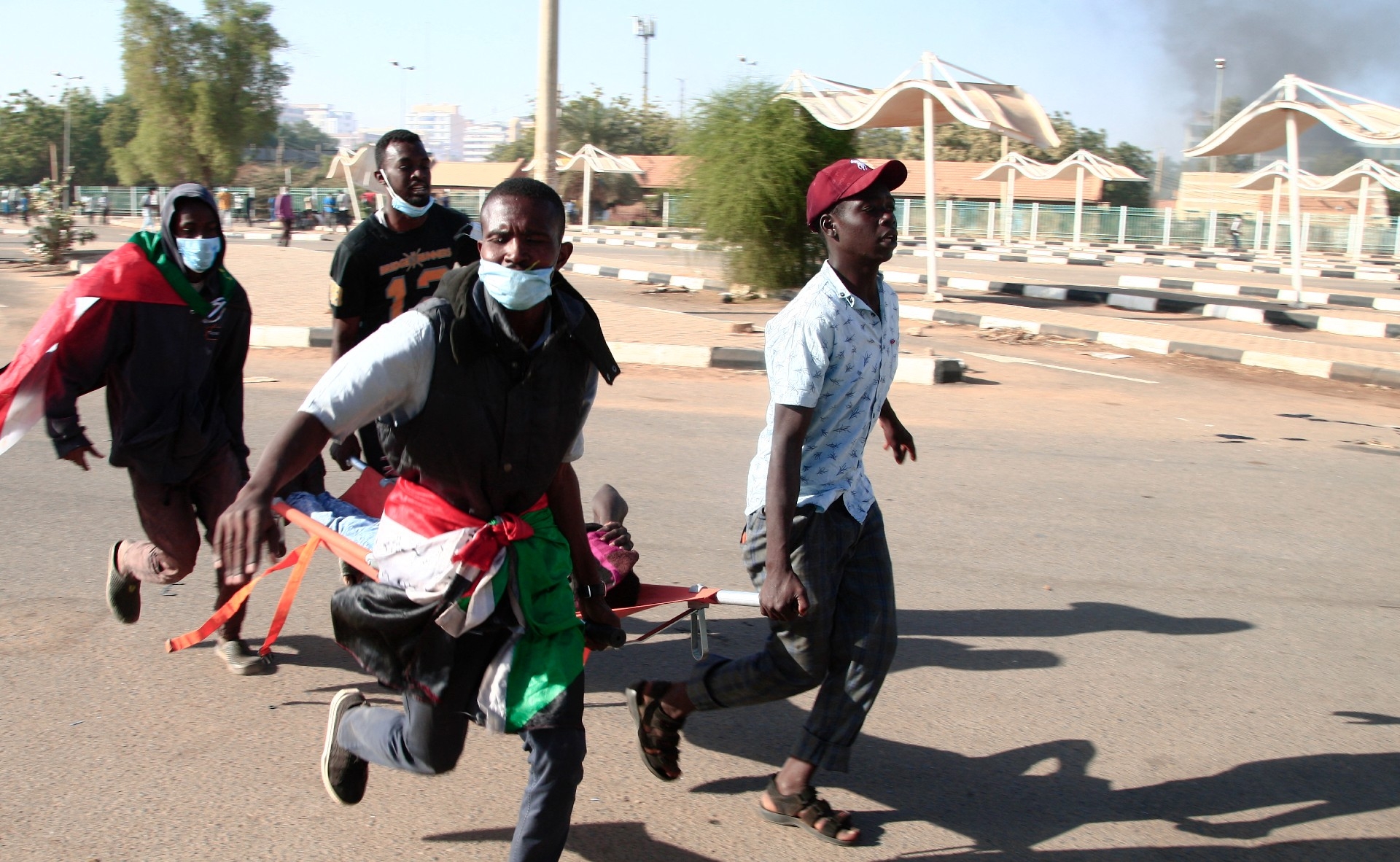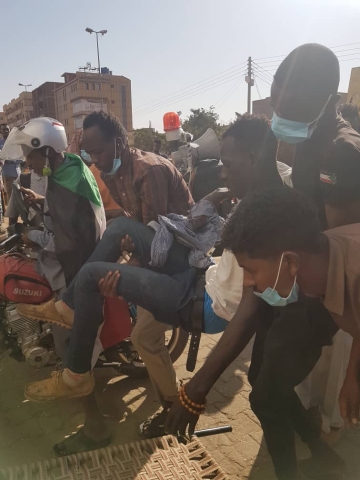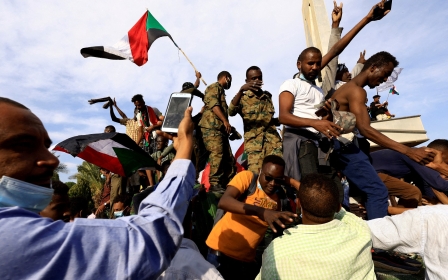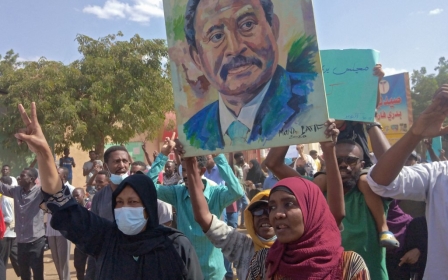Sudan coup: Inside a Khartoum hospital in the eye of the military's storm

In Khartoum's al-Daim district, protesters are funnelling the wounded through al-Joda hospital's doors.
“Ambulance behind ambulance, welcome death, we will never be afraid,” they shout, carrying bloodied and broken bodies, showing solidarity for the men and women recovering inside.
'These signs of targeting heads, chests and the upper parts of the body with live ammunition show it’s intentional targeted killing by snipers'
- Medical source
The doctors, nurses and paramedics coming to the demonstrators' aid, too, are addressed: “Thanks our white army”, goes the chant, honouring the medics who are dealing with the results of the Sudanese security forces' violent crackdown.
Welcome to al-Joda, a flashpoint in the anti-coup demonstrations that have been roiling since the military took control of Sudan in late October, and a lifeline for hundreds of protesters caught up in the violence since.
Over more that two hours on Thursday afternoon, Middle East Eye watched motorbikes used by medics and the resistance committee pro-democracy activists continually arrive with wounded protesters.
Nearly 70 casualties were carried into the hospital, with their families massing outside and chanting.
Motorbikes are used because al-Joda simply doesn't have enough ambulances. Only two are currently in use, struggling to transport critical cases from streets around the presidential palace in downtown Khartoum.
Also on the ground is a team wearing Doctors Without Borders (MSF) uniforms providing medical assistance. Their medics tend to lend a hand when violence has reached a peak.
An MSF source told MEE that they got the permission to deploy the teams on the ground in coordination with the authorities. With access fragile and vital, the source was keen to say no more in case their presence was jeopardised.
Like the other hospitals in Khartoum, al-Joda has been attacked by the security forces on a number of occasions since the anti-coup protests began. It is often safer not to bring wounded protesters back to the hospital.
Medics and resistance committee members are keen to give initial assessments and assistance on the ground, and then move them to safer locations that can't be tracked by the security forces.
"We need to carry out a number of different tasks at the same time," a medical source tells MEE. "We protect the hospital in coordination with the resistance committee members, we evacuate and treat the injured and we find them safe places to go to after we have given them initial treatment."
Hanadi Ahmed, a member of al-Joda's staff, tells MEE that the number of casualties admitted on Thursday was the highest since protests began more than two months ago.
“Let me confirm that more than 100 have entered the hospital today with different injuries, the majority caused by tear gas. Sometimes the injuries are critical because the security men use the tear gas from very close quarters and this is a serious violation and can be a deadly action,” she says.
Three protesters were reportedly shot dead by security forces on Thursday.
Gunshots
According to the Central Committee of Sudanese Doctors (CCSD), one of those protesters had been shot in Omdurman, Khartoum's twin city and a flashpoint district.
“A protester that we haven't identified yet was shot in the head and died immediately,” the CCSD said. At least 60 have been killed since the military takeover.
Alamin Abdul Motaal, an Omdurman resident, told MEE that bloody cat-and-mouse confrontations are being played out around the district's 40th Street hospital, with security forces storming the facility using tear gas.
“The streets around the 40th Street and the 40 clinic in the same area have witnessed street battles between the protesters and the police and security forces, as they want to block the hospital and not allow ambulances to get in. They tried to enter the hospital and detain the doctors as well as the wounded,” he said.
Medical sources said snipers have been deployed around the Sudanese capital, noting that the majority of gunshot wounds are in the head or the chest. Video footage seen by MEE showeed security forces snipers firing on peaceful protesters from building rooftops.
“These signs of targeting heads, chests and the upper parts of the body with live ammunition show it’s intentional targeted killing by snipers,” one source said.
Raids on hospitals have become routine. A medical source said patients are often attacked when hospitals are stormed by security forces.
“Hospitals in Omdurman, Bahri and Khartoum have been stormed many times,” he added.
There are no signs the violence will abate any time soon. On Sunday, Prime Minister Abdalla Hamdok resigned, the last civilian face of the Sudanese leadership.
Sudan now appears to be totally in the hands of the military, though marathon mediations are ongoing to solve the crisis, including an initiative presented by the UN special envoy Volker Perthes and one drawn up by the National Umma Party (NU), among others.
Meanwhile, the resistance committees are drawing up a political declaration, which they say will outline a future for Sudan without military chief Abdel Fattah al-Burhan.
Whatever the response to these initiatives, Sudanese medics will be prepared to deal with the outcome.
Middle East Eye propose une couverture et une analyse indépendantes et incomparables du Moyen-Orient, de l’Afrique du Nord et d’autres régions du monde. Pour en savoir plus sur la reprise de ce contenu et les frais qui s’appliquent, veuillez remplir ce formulaire [en anglais]. Pour en savoir plus sur MEE, cliquez ici [en anglais].






